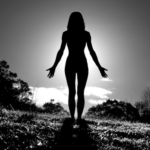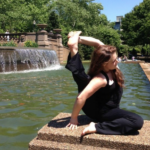Winter time—its with cold temperatures, short days, and holiday expectations—can stir up latent feelings of anxiety and depression. In general, yoga is a great practice to turn to when you want to regulate or work on your mood. As yogi and author of Yoga for Depression Amy Weintraub notes, “It’s impossible to be obsessing about your problems when you are paying attention to the details of your alignment.” I highly recommend Weintraub’s book for anyone interested in the topic of using yoga to alleviate depression or anxiety. 
Here’s the Cliff Notes—different poses have different effects on the mind and parasympathetic nervous system. Some are better for combating anxiety, some depression, and some are beneficial for both. For example, while yoga teachers will often recommend seated forward folds to help ground their anxious students, but they would not suggest this pose for someone suffering from severe depression. “If you’re already feeling empty and lethargic, sitting with the head down so still and quite can make you feel worse,” states senior Iyengar Teacher Patricia Walden.
For depression, backbends, mountain pose (tadasana) and inversions are great options. Going upside-down with inversions (like headstand and handstand) helps shift perspective. Standing tall and strong in mountain pose forces one to exude confidence and purpose (tadasana).
For anxiety, a child’s pose (balasana) is a crowd favorite among yogis. If you suffer from anxiety or insomnia, a few minutes of deep, calming breaths in child’s pose really helps support the parasympathetic nervous system and relax your body and mind.
For students who suffer from depression combined with anxiety, Weintraub suggests a hard, energetic workout to get the heart beating and burn off lingering anxiety, with a long, grounding cool-down.
You can read more about different yoga techniques for dealings with anxiety and depression in Amy Weintraub’s book, Yoga For Depression: A Compassionate Guide to Relieve Suffering Through Yoga (New York: 2004). For inspiration, I would also suggest checking out Rachel Brathen’s Yoga Girl (New York: 2014), and Ana T. Forrest’s Fierce Medicine: Breakthrough Practices to Heal the Body and Ignite the Spirit (New York: 2011).
Reading about yoga is a great way to learn more about the practice, but taking a class is a great way to explore the practice “in-action” under the tutelage of a trained yoga instructor; check out MINT’s yoga offerings, here.


